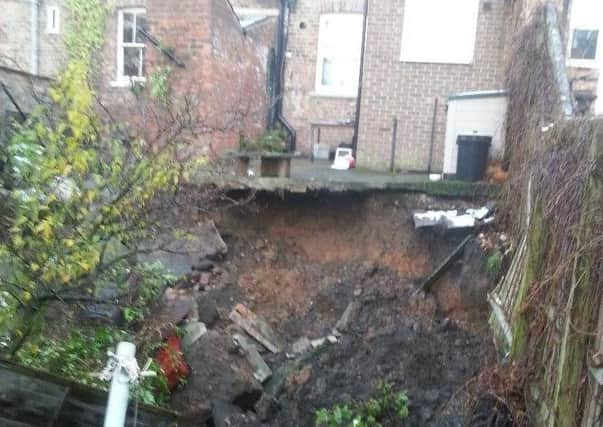Gypsum may pose a problem in parts of Ripon


Residents of Magdalen’s Road in Ripon are still coming to terms with the giant sinkhole that opened up outside their homes.
A dozen properties were evacuated last week after the gaping hole, which measures 66ft by 33ft with a depth of 30ft, appeared in the dead of night. Sewer pipes were affected and those living nearby have been advised to be alert for potential issues such as the appearance of cracks or visible movement in floors or walls.
Advertisement
Hide AdAdvertisement
Hide AdThe event has shaken homeowners and for would-be buyers in the cathedral city but it’s nothing new. Thanks to the geology of the area, which has gypsum deposits, parts of it are susceptible to sinkholes and subsidence.
Dr Helen Reeves, Science Director of Engineering Geology at the British Geological Survey, says the latest hole is similar in size to one two years ago that opened up beneath a 100-year-old building in nearby Magdalen’s Close, leaving it close to collapse.
York-based chartered surveyor Jon Charters-Reid adds: “There is a thin band of geology that stretches from Nottingham through Ripon and up to the north east. It is made up of carboniferous limestone, mudstone and gypsum. The gypsum is water soluble and where you have aquifers and underground streams, it will erode and can cause the ground to collapse.”
Dr Tony Cooper, of the British Geological Survey, puts it into perspective: “If you took a chunk of gypsum the size of a van and left it in a river it would be dissolved in about 18 months.”
Advertisement
Hide AdAdvertisement
Hide AdThe gypsum-rich and therefore more subsidence-prone seam runs from Doncaster to Hartlepool but parts of Ripon are most vulnerable as they have the highest concentration of gypsum.
While the erosion usually happens deep underground, it can also be seen on the gypsum cliff on the banks of the River Ure at Norton Conyers, just outside Ripon. It is dissolving and geologists say it has been undercut by ten feet in the last decade.
Climate change is thought to be partly responsible as we experience warmer, wetter weather with bursts of torrential rainfall that can cause rapid erosion. It’s also one of the reasons given for an increase in sinkholes in the UK, though there are other causes.
According to the British Geological Survey, as well as catastrophic rainfall, they can be caused by leaking drains, burst water mains, building works, emptying a swimming pool and mining. They are difficult to predict but there are some warning signs, including cracks in the ground and a partial collapse.
Advertisement
Hide AdAdvertisement
Hide AdMeanwhile, would-be buyers of homes in gypsum hotspots should invest in a good structural survey conducted by someone who is familiar with the area and its geology.
“You do not have to use a surveyor suggested by your mortgage provider. It pays to use someone local who will know if there are gypsum deposits or any other issues in the area. If there are then I’d also suggest getting a detailed ground survey,” says Jon Charters-Reid, who admits that forecasting the likelihood of earth slippage is sometimes “crystal ball territory”.
What is clear is that buildings insurance is vital. If a sinkhole occurs on private property, it may be the homeowner’s responsibility.
Head of Underwriting for Halifax Home Insurance, David Rochester said: “Sinkholes can cause the structure of the home to become unstable and unsafe and in extreme cases entire properties can collapse. It is essential to have good buildings insurance in place which will cover the cost of repairs to any damage to the building, as well as other expenses such as alternative accommodation while repairs are being carried out. Without buildings insurance, an incident such as this could leave homeowners with a massive repair bill that most people would find financially crippling.”
Advertisement
Hide AdAdvertisement
Hide AdFilling a chasm left by a sinkhole usually involves backfilling by pumping sand and cement into the hole. Two years ago a hole that opened up on top of a former brickyard took about 200 cubic metres of cement, equivalent to 17 lorry loads to fill.